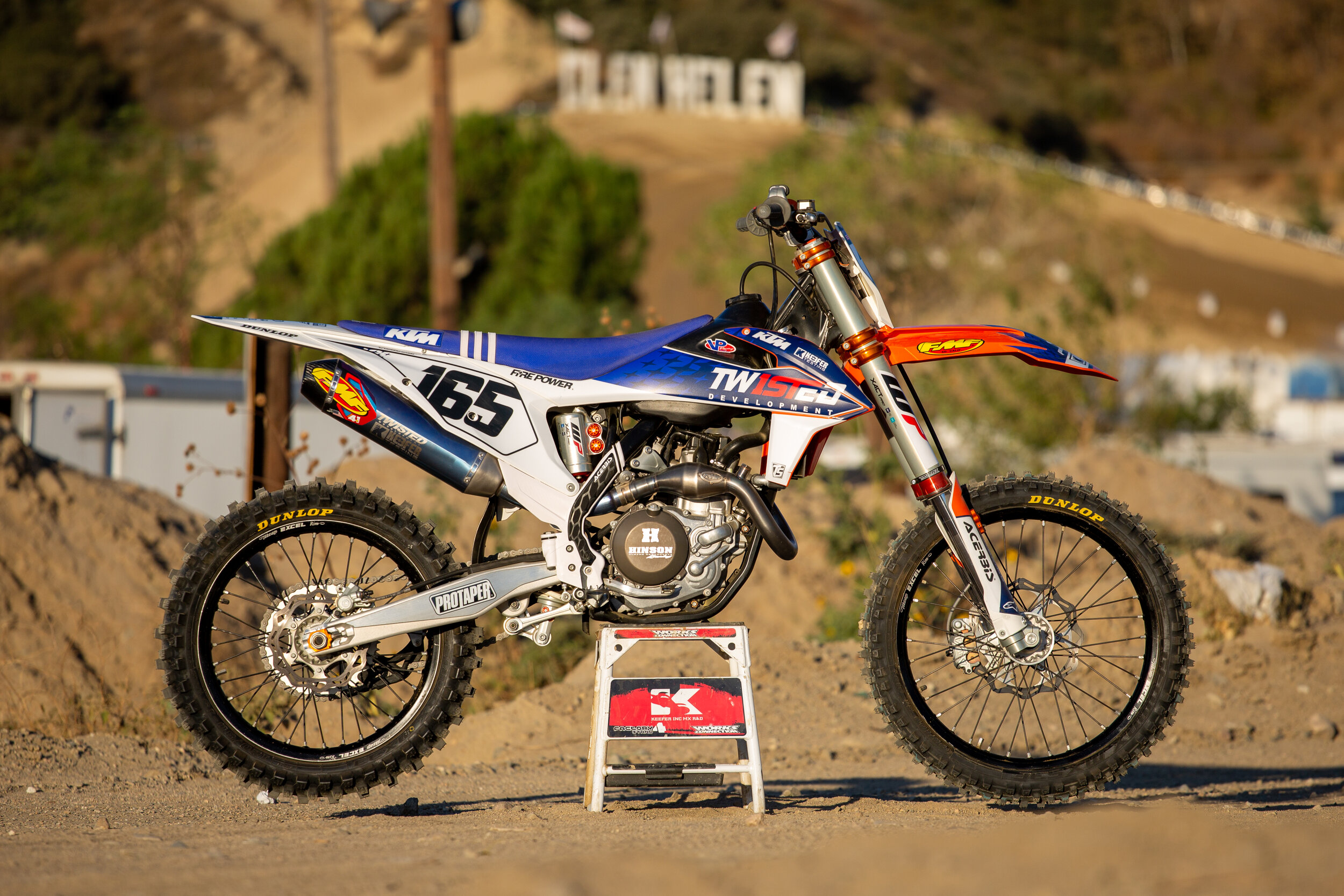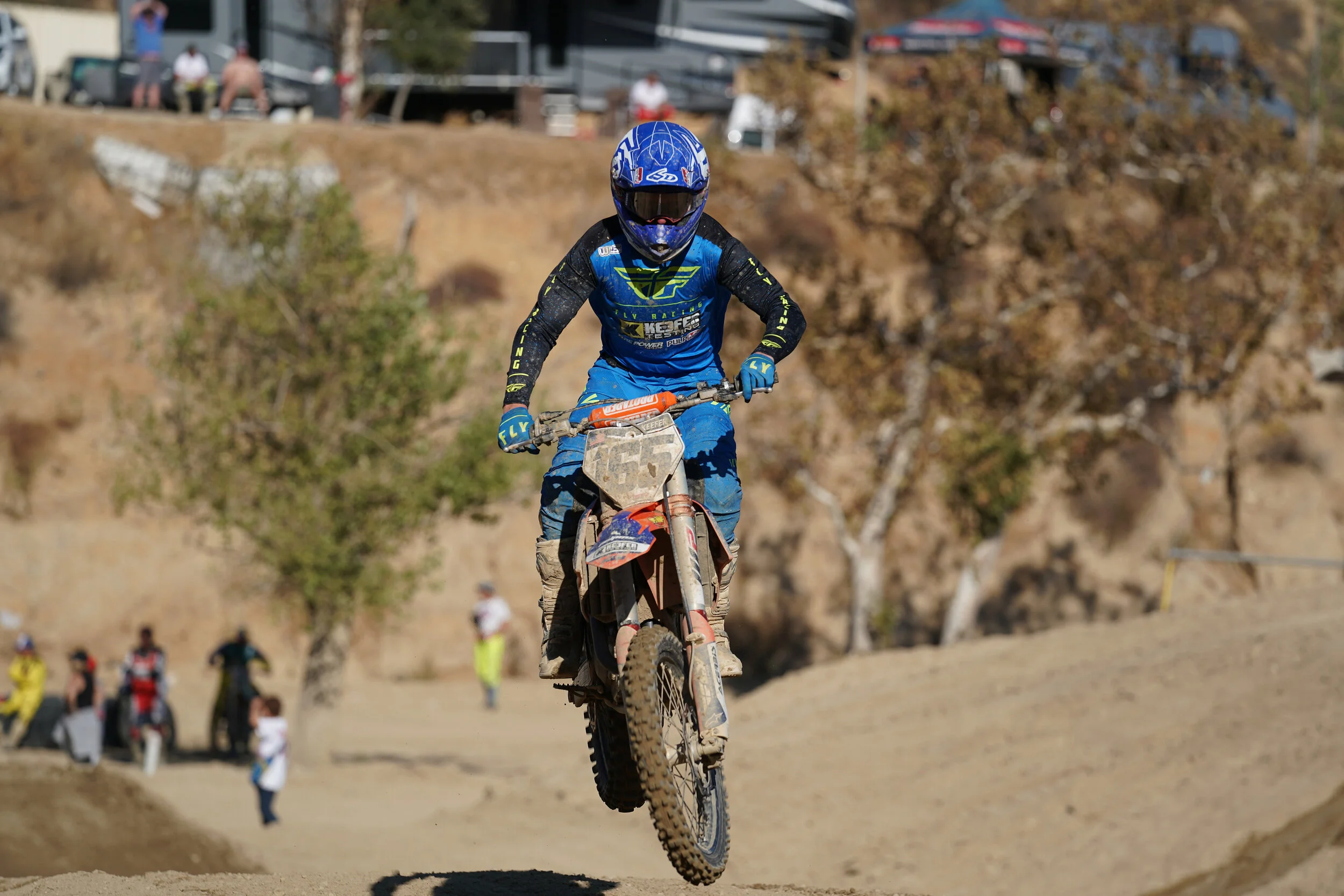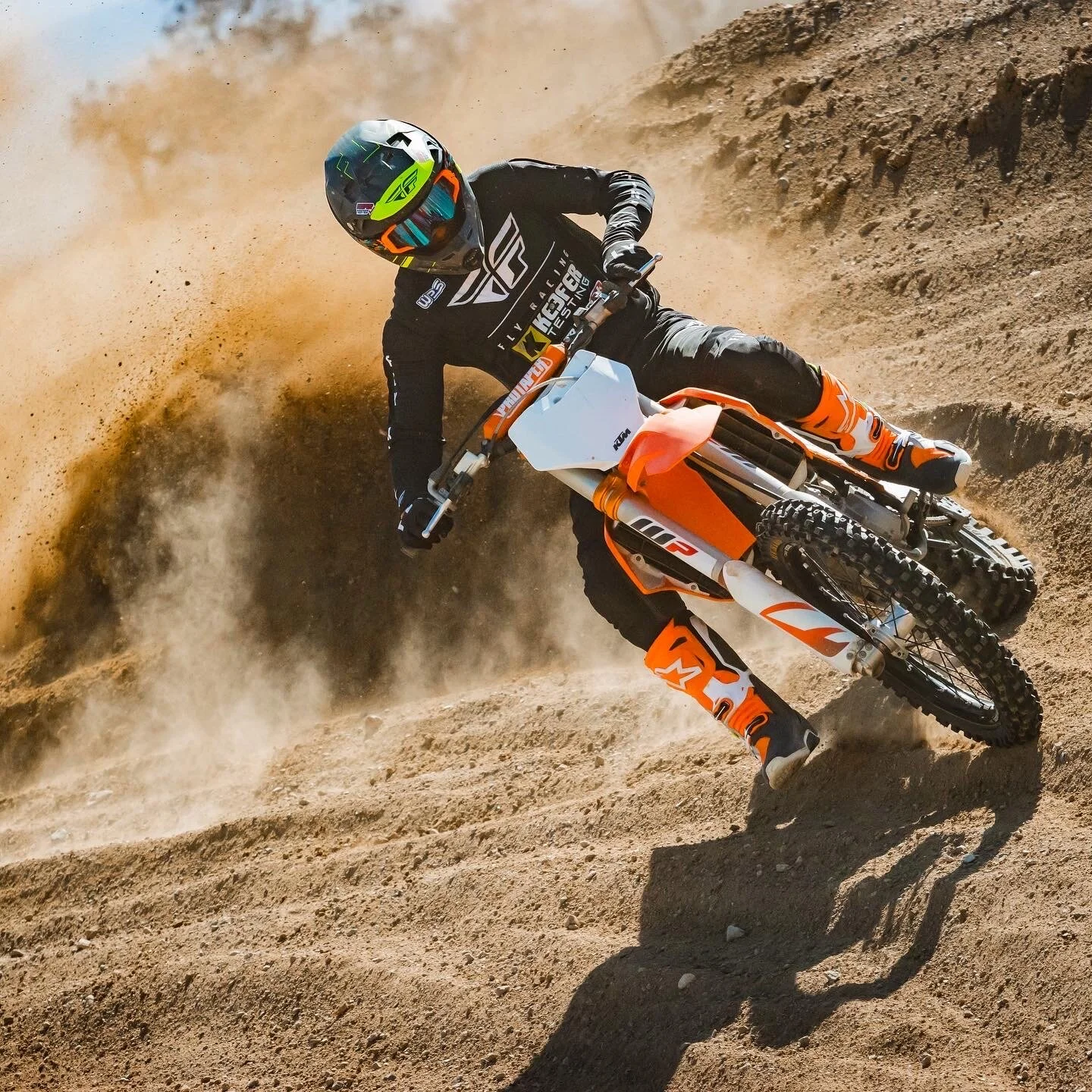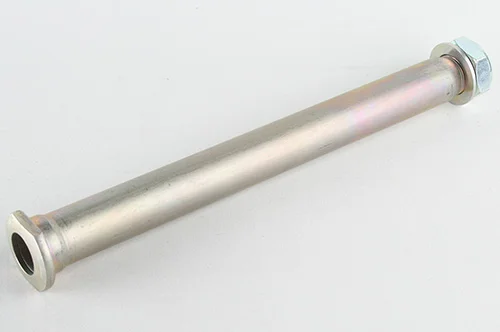The stock KTM/Husqvarna clamps are too stiff for me! What about you? Well, if you’re here reading this, chances are they might be too rigid for you as well! It’s odd because most other manufacturers OEM clamps are on the soft side, but the Austrians had something more rigid in mind when making these stock clamps. So in search of other options besides an X-Trig ROCS or a KTM Factory Edition clamp, I went out and tried Ride Engineering’s new split clamp. When Ride Engineering set out to build the KTM clamps, they’ve been designed with four goals in mind: 1) Optimize body position: (Bar position 3mm back from stock). Ride Engineering also offers optional offset for their bar mounts providing 4 bar positions as measured from the stem hole: 6mm forward, 9mm forward, 15mm forward & 18mm forward (using stock bar mounts your positions are either 7mm or 17mm forward); 2) Flex: this new split design made from 2024 aluminum is said to provide better comfort; 3) Improve the handling with a new gull wing design; 4) Place the upper pinch bolts in the front and allows for different aftermarket handguard mounts. Each set comes with a frame mounted hour meter relocation bracket so that you can retain your OEM hour meter. So how did they perform on the track? We break it down for you here.
The stock KTM triple clamps are stiff natured and can make your orange bike feel rigid/harsh. My goal for this test was to find less front end vibration through the bars, more front end comfort, as well as try to get a more precise front end feel through corners, without getting added rigidity on hard pack/rough straights. Basically get a more compliant KTM 450 SX-F, but that is sometimes tough to do right? The good news is that this is exactly what I found with the Ride Engineering Split Clamps. The Ride Engineering clamp on the KTM 450 SX-F provided enough flex on small bumps, which gave me less of a stiff feel through the bars, yet was also stiff enough to give me a positive front wheel lean angle through flat corners. The Ride Engineering clamp is most noticeable when diving deep into a rut where there is a huge load put on the front end, forced by the rider. The chassis positivity through this area is much better than the stock clamps. The stock clamps have a tendency to give the rider a rigid feel when weighting the front end (although slightly more positive feeling), deflection on de-cel bumps and vibration that is not very friendly. The Ride Engineering clamp gives the front end more tire contact patch feel because it allows the front end to absorb more of what the track is offering the rider. Going firmer on the triple clamp can give a rider more positivity at times, when leaning into a corner, but in this case, I felt like I could get into a corner much easier with the Ride clamps. Straight line stability is improved because of the bump absorption character of the Ride clamp and vibration is also down which gives the bike a tighter, less clapped out feel. Also do yourself a favor and get rid of those stock Neken handlebars. Buy some Pro Taper EVO bars and thank me later!
Compared to a factory KTM clamp (that comes on the Factory Edition) the Ride Engineering clamp does have a little more flex to it than the KTM FE clamp. The two share the same split design, but offer different flex characters on the track. The KTM FE clamp does have a slightly firmer feel, which does help area 2 of corners when pushing your front tire/front end hard while banking off of ruts. The KTM FE clamp does give a little more positivity in that area, but in all other areas of the track the Ride Engineering split clamp just has more comfort. I tried the Ride Engineering Split Clamps with the stock mounts and the rider triangle of the bar mount position on the clamp wasn’t an issue for my 6’0 frame. I also have tried the Ride Engineering bar mounts, so if you’re taller and looking for more room, you might want to look into a set of the two piece bar mounts from Ride as well.
A lot of back to back testing went down against the KTM Factory Edition clamps in order to figure out how much flex was too much or too little.
Ride Engineering offers two offsets (22mm and 20.5mm), comes in four colors (black, orange, silver, LE blue) and redesigned with a 90mm span to accept the stock bar mounts and mounting hardware. The $689.90 price tag is also not as steep as some of the other clamps in its class and to me Ride Engineering is one of the few aftermarket chassis part companies that actually test their own products. To have an owner that rides his own parts, then makes an educated decision on if it’s better than stock, is pretty damn cool. You can check the Ride Engineering Split Clamps out at ride-engineering.com.
If you have any questions about these clamps, or any others for that matter, or maybe want a discount code, hit me up at kris@keeferinctesting.com.

















